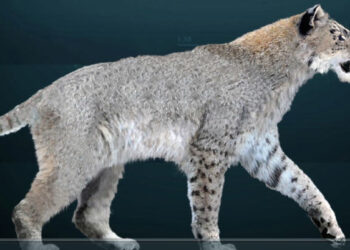January 1, 2024
2 min read
An ancient frog, bird and dinosaur wore elusive yellow and orange shades, a new lab technique reveals
The bird Confuciusornis, which lived more than 120 million years ago, had warm-colored feathers.
Millard H. Sharp/Science Source
The prehistoric animal kingdom was a riot of colors, from iridescent-feathered dinosaurs to jet-black ink excreted by Jurassic squid relatives. Like modern-day animals, ancient species’ hues helped them communicate, camouflage and even regulate body temperature. But reconstructing these colors today is a challenge because compounds and structures that color animals’ skin, fur and feathers usually degrade or change during fossilization. Experts have developed methods to reliably detect structures and pigments related to dark colors like the black and brown of feathered dinosaurs, but other shades (like the yellow and reddish-orange made by pigments called pheomelanins) have been especially hard to pin down.
Now a team of scientists has filled in that missing chunk of the prehistoric palette by developing the first reliable test to detect these gingery colors in fossils. “Pheomelanin is clearly an elusive pigment, and these findings will absolutely help us to detect evidence of ginger pigments in other fossils,” says the study’s lead author Tiffany Slater, a paleobiologist at University College Cork in Ireland. The results were recently published in Nature Communications.
Slater and her colleagues went looking for ginger shades in the fossil record because evidence of pheomelanins has shown up there far less often than the researchers expected, compared with modern-day animals. And the previously reported evidence was largely inconclusive. Scientists who interpreted a reddish color for the armored dinosaur Borealopelta, for example, couldn’t distinguish whether the pheomelanin they found came from the original pigment or from contamination after the dinosaur’s death.
On supporting science…
Read the full article here







